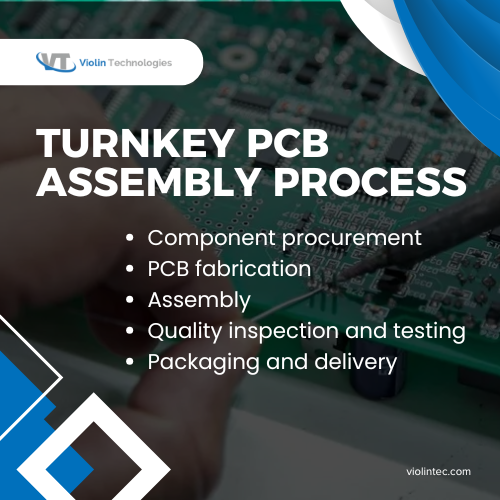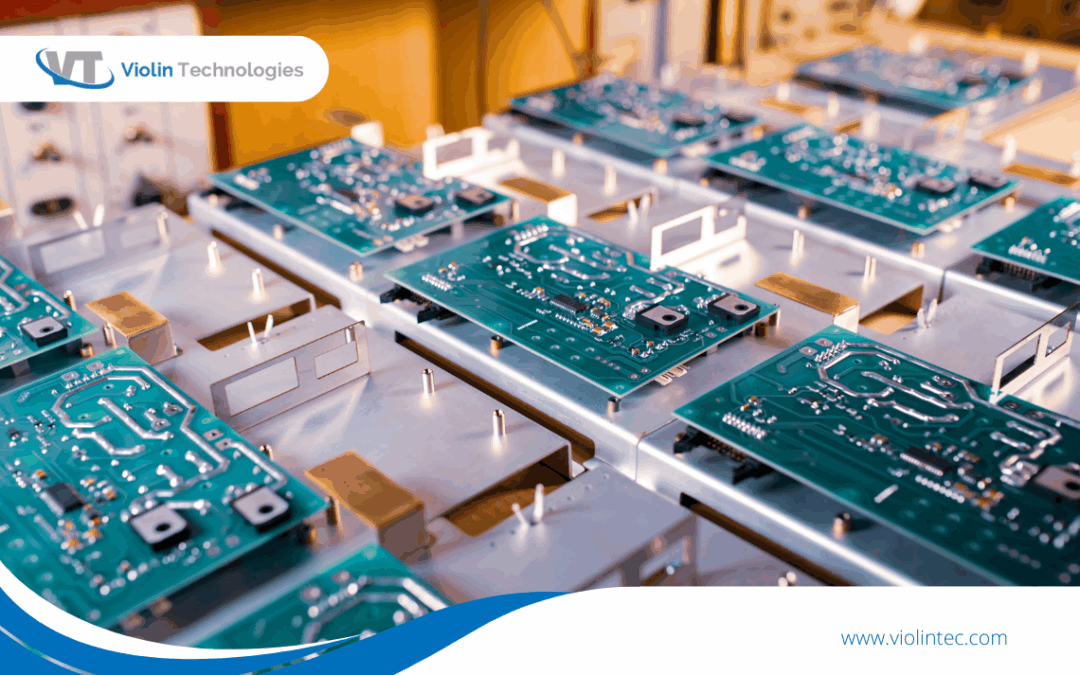Simply put, turnkey PCB assembly is a one-stop service in which a single provider handles everything—from procuring parts to delivering fully assembled printed circuit boards. Instead of coordinating with multiple suppliers across different stages, such as PCB fabrication and assembly, you hand over your design files, and the provider manages the process from start to finish.
Unlike consignment or partial assembly models, where you might supply components or oversee certain steps, turnkey assembly offers convenience by entrusting the entire PCB manufacturing process to a single vendor. This approach saves you valuable time, minimizes risks, and enhances quality control.
In this article, we’ll explain what turnkey PCB assembly is, highlight its key benefits, walk through the step-by-step process, and share tips for selecting a PCB manufacturer that consistently delivers high-quality results.
What is Turnkey PCB Assembly?
Turnkey PCB assembly is a service model in which the contract manufacturer handles the entire PCB assembly process. This includes sourcing all components, assembling the boards, testing the final units, and often packaging them for delivery.
The term “turnkey” implies that once the service provider takes over, the client “turns the key” to a finished product, with minimal involvement until the delivery of completed PCBs.
This approach drastically simplifies supply chain management for companies, especially those lacking in-house manufacturing capabilities or aiming to reduce operational complexity.
The Turnkey PCB Assembly Process
The turnkey process typically involves the following key steps:
1. Component Procurement
The assembly provider sources all components based on the client’s Bill of Materials (BOM). Efficient sourcing is crucial to prevent delays or component shortages that can stall production.
2. PCB Fabrication
PCBs are manufactured in accordance with design specifications. Here, the provider ensures quality control in accordance with relevant IPC standards for PCB assembly, such as IPC-A-610—the industry-recognized guideline for electronic assemblies.
3. Assembly
Components are mounted on the PCB surface using various techniques, including Surface-Mount Technology (SMT) and Through-Hole Technology (THT). Precision machinery and skilled technicians collaborate to achieve high-quality results.
4. Quality Inspection and Testing
After assembly, the boards undergo thorough inspection through Automated Optical Inspection (AOI), X-ray inspection for hidden joints, and functional testing. This stage plays a critical role in maximizing PCB assembly yields by catching defects early.
5. Packaging and Delivery
Finally, assembled PCBs are appropriately packaged to prevent damage during transit and shipped to the client or end-user.

What are PCB Assembly Yields?
PCB assembly yield refers to the proportion of boards that pass quality inspection and testing without defects. It is a critical performance metric indicating process efficiency and product reliability.
High yields mean less waste, lower costs, and faster time-to-market. Achieving this depends heavily on:
- Precise component placement
- Strong adherence to IPC standards
- Rigorous testing protocols
- Effective supplier and component quality management
Turnkey PCB assembly providers often have the expertise and resources to optimize yields, improving overall project profitability.
Why Are IPC Standards Essential for PCB Assembly?
The IPC standards set industry-wide benchmarks for quality, safety, and performance in PCB manufacturing and assembly. Adherence to these standards ensures:
Recommended Materials:
- Consistency across production batches
- Reliable electrical and mechanical connections
- Safe use of materials and soldering processes
- Acceptance in regulated industries such as aerospace, medical, and automotive
Clients partnering with IPC-compliant PCB assembly providers can rest assured that their products meet international quality expectations.
Benefits of Outsourcing PCB Manufacturing
Many companies prefer to outsource their PCB assembly to turnkey manufacturers for compelling reasons:
- Reduced Capital Investment: Not required to invest in costly assembly equipment and facilities. )
- Expertise Access: Benefit from experienced engineering, procurement, and quality teams.
- Faster Time to Market: Streamlined processes and volume capabilities accelerate delivery.
- Cost Efficiency: Leverage the supplier’s economies of scale and supply chain connections.
- Quality Assurance: Stringent controls and IPC compliance enhance the dependability of the final product.
- Risk Mitigation: Outsourcing transfers manufacturing risks related to inventory, defects, and labor.
These advantages allow product developers to focus on innovation and marketing rather than complex manufacturing logistics.
Conclusion
Turnkey PCB assembly represents a smart, streamlined choice for many electronics companies today. By entrusting the entire assembly process to capable providers, businesses gain access to optimized PCB assembly yields, adherence to strict IPC standards, and the numerous advantages of outsourcing PCB manufacturing.
Whether you’re a startup or a large enterprise, understanding turnkey assembly can help you make informed decisions that reduce costs, improve quality, and accelerate your product’s journey to market.

